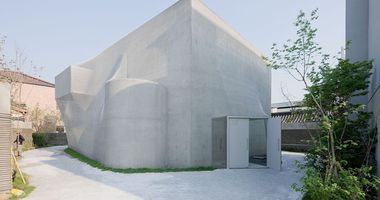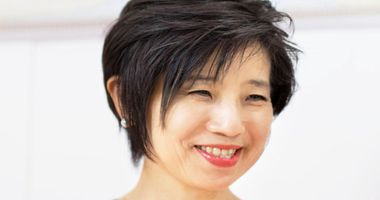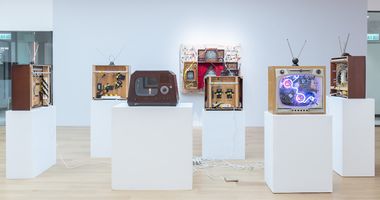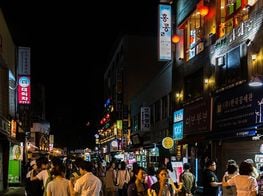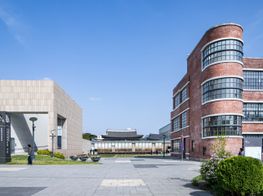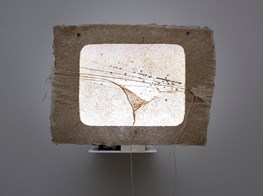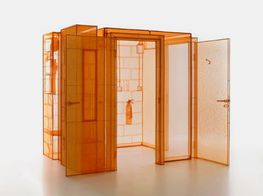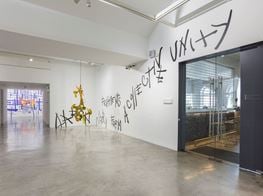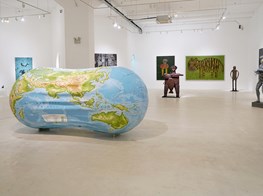MMCA Seoul's First Steps
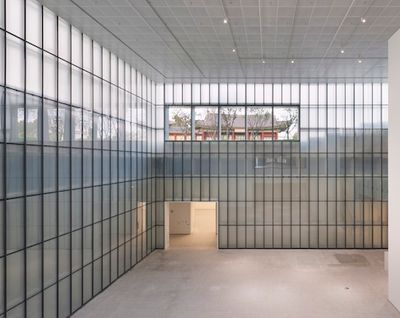
MMCA Seoul. Courtesy MMCA Seoul.
South Korea's most anticipated event of the year, the opening of MMCA Seoul, is a milestone for the national museum and local art scene. The new outpost of South Korea's singular, national contemporary art museum is situated on a minefield of historic structures, set within a zoning law nightmare, and sandwiched between rightfully finicky neighbors that include iconic Gyeongbok Palace, trendy Samcheong-dong, and the presidential Cheongwadae (colloquially called the Blue House). It's also right in the heart of the city.
The centrally located Seoul branch of the National Museum of Modern and Contemporary Art (MMCA) opens to the public November 13, and a description of the museum is as difficult to pigeonhole as its open-plan construction. In figures, the museum is a modestly budgeted 246 billion won-structure ($230 million) that stretches across 27, 264 square meters of land.
To avoid the obstacles of its surroundings, architect Mihn Hyun-jun decided against the Zaha Hadid school of design, on view at the continually delayed Dongdaemun Design Plaza & Park, opting instead for a minimal—if somewhat underwhelming—construction that burrows 17 meters underground to achieve height.
The design allows for the coexistence of the site's radically incongruous elements, but also hints at a subtle discord that underlies the museum's greatest challenge: achieving harmony from within and amongst the politics of government, while being pulled at all sides by art world elites and the international community's expectations.
The best of the inaugural shows are the site-specific installations.
Physically, the parrying elements are the former Defense Security Command, a 1950s military counterintelligence agency, and Jongchinbu, the former Office of the Royal Genealogy that in the 1980s was moved to another location within Seoul before being replaced as construction uncovered the traditional building's original foundation.
The latter was the cause of several delays (in addition to a fire in summer 2012 that killed four workers), as building was halted to excavate artefacts from the site, and blueprints updated to integrate the traditional hanok structure. An original grounds plan was even discovered at a Harvard library, serving as a reference point for the museum's new buildings, laid roughly in corresponding sites. Envisioned as an archipelago of exhibition halls and resource facilities, Mihn created disparate buildings connected by open courtyards that take from Korean madang.
It is a clever construction that allows visitors arriving from all directions to be drawn into the museum. From tourists visiting Gyeongbok Palace to the east, culture vultures dropping in from top gallerists Hakgojae, Kukje Gallery, and Gallery Hyundai from the north and south, to young couples on dates in Samcheong-dong to the west.
As accessible the museum is, it's also meant to challenge curators and disrupt standard exhibition viewing practices, placing the onus of momentum on visitors themselves. Considering entrances can be found in each cardinal direction, and passersby are given the option to enter at any given point of the eight exhibition halls, compelling programming is the only factor that keeps viewers within museum boundaries as they move between buildings.
The stakes are high, and despite a sharply defined strategy, there are skeptics and hesitant optimism for the newest branch of the National Museum. In terms of overall direction, its multiple locations have a clear division of duties. The headquarters in Gwacheon is to take on a stronger research mission, with a newly opened public archives centre and large-scale retrospectives on established living Korean artists and emerging names. The Deoksu Palace location, housed within a Japanese colonial-era building within the palace, will have a modern Korean and Renaissance art focus, and an upcoming space in Cheongju, North Chungcheong Province, to be open in 2015, will be a conservation and storage centre.
The Seoul branch will focus on the interdisciplinary world of cutting-edge contemporary art, but largely domestic artists. The museum's permanent collection is 90 percent Korean, a number that will be reflected in its programming, said director Chung Hyung-min. Of the museum's exhibitions, about 30 percent will be dedicated to collection works, and the remainder to other Korean and international artists. The global gateway side of its goal can be seen in MMCA Seoul's concurrent inaugural exhibitions, although its success in execution varies.
Divided into five shows, the largest is Connecting_Unfolding, a joint endeavour between six international and one local curator: Richard Flood, Ann Gallagher, Yuko Hasegawa, Lee Sook-Kyung, Berhard Serexhe, Pooja Sood, and MMCA's chief curator Choi Eun-ju. Each recommended an artist to include in the show, names with established art vocabularies that encompass the diverse forms of contemporary art today. Work by Tacita Dean, Kim Jones, Amar Kanwar, Marc Lee, Lee Mingwei, Kishio Suga, and Minha Yang stretch across three galleries, although the fragmented approach lends the show an uneven, often imbalanced quality.
While Kanwar's political The Sovereign Forest is allowed space to breathe, and visitors permitted to explore its implications of human tragedy, Mono-ha icon Suga is shunted into a corner—not that it destroys the value of featured 'Shachi Jokyo,' which he said can be experienced either in a single element or thousands. Yet the opposing pace of each artist's work is left abandoned within the contextually isolated spaces, providing less of a dialogue than a teasing glimpse into an art world frustratingly distant from the viewer.
It is a clever construction that allows visitors arriving from all directions to be drawn into the museum.
The remaining shows prove more worthwhile Zeitgeist Korea collects exemplary pieces produced in Korea since the 1980s to present day, with works by Nam June Paik, Oh Won-Bae, and Choi In-soo featured among a list of some 50 artists.
Birth of a Museum is a documentary and archival project created by prominent younger artists Yangachi, Noh Suntag, and Seung Woo Back. The three were given free reign and access throughout MMCA Seoul's construction, visiting regularly to create a video documentary, photography series, and audio works that encompass the past and present of the museum. The images and sounds create a complex portrait of the site and its politics, bringing to the forefront such historical tidbits that reveal the land also once housed three different hospitals during the colonial era.
The Aleph Project borrows from Jorge Luis Borges and the concept of synecdoche, using new media to present work by international artists to local audiences. Taking simplification to represent the increasingly complex approach to art and the aesthetic world, the artists present deceptively basic works, complicatedly rendered to incite emotions of sublimity and base shock, anxiety and ease. Edwin van der Heide's Evolving Spark Network and Philip Beesley's Epiphyte Chamber, among others, make their local debuts.
But the best of the inaugural shows are the site-specific installations. In particular, Young-Hae Chang Heavy Industries' 11-channel, 26-minute synchronised video work is a must-see that begins in Gallery 6 and moves downstairs to a basement storage space not originally intended for show. Groovin' to the Beat of the Big Lie can be broken into three separate parts, and is the artist duo's most ambitious work to date. Each video is projected onto the entirety of the exhibition halls' walls, creating an immersive experience without a central focal point: it's best viewed while spinning to visually 'chase' the text.
Paired with an original soundtrack, Me, My Baby, and Bibimbop is the highlight piece. A provocative foray into the fine boundaries of food, sexuality, and Occidentalism, the work takes Heavy Industries' narrative skill to a new level of play, breaking the fourth wall while inducing existential epiphanies to the tune of perfect punctuation and jazz beats.
Choe U-Ram's Opertus Lunula Umbra (Hidden Shadow of the Moon) brings a sinister mystery to the museum's tall corridors, a hanging entomological structure that extends and retracts in the artist's favoured animatronic styling. And, peeking from behind the massive caterpillar is the dark blue that has been one of the most publicised segments of MMCA Seoul: Do Ho Suh's largest installation work to date.
The 1:1 scale piece incorporates Suh's childhood hanok family home in Seongbuk-dong and places it inside the three-story building of his first residence in Province, Rhode Island. The result is Home Within Home Within Home Within Home Within Home, a structure that takes into stride not only its own dimensions, but that of its surroundings. From the traditional structure, to the American one, to the museum space, to the historic Gyeongbok Palace area, and then finally Seoul, the artwork finds itself at the centre of South Korea and the city's new art world.


